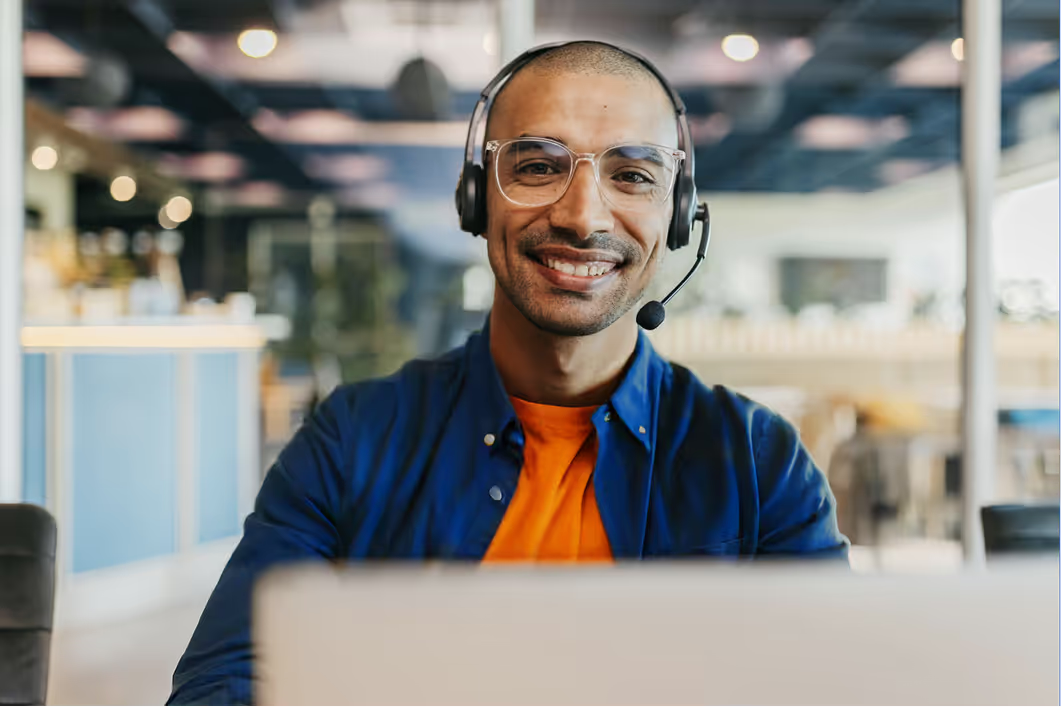5 best practices for creating a diverse work environment

Discover Workleap Officevibe's benchmark report on 12 key employee engagement metrics

Great teams don’t think the same. They think together, drawing on different perspectives to solve problems in ways no single mind could.
When organizations embrace that mix, teams bring more ideas to the table and build solutions that work for more people. Employee engagement goes up, and since workers feel seen and supported, retention improves.
But fostering diversity in the workplace requires more than a mission statement or a slide in the company all-hands. It takes thoughtful practices and a culture where everyone has room to contribute.
In this guide, we’ll look at why diversity matters, what gets in the way, and five best practices to help you build a team that’s stronger because of — not in spite of — its differences.
What’s diversity in the workplace?
When you build teams that reflect a range of backgrounds, identities, and experiences, workplace diversity is the result. At a diverse company, employees of different races, genders, ages, ethnicities, sexual orientations, and abilities all have a seat at the table.
In the workplace, diversity, equity, and inclusion are often part of the same initiative. But they serve distinct (and equally important) roles:
- Diversity is about representation. Who’s in the room? Are different lived experiences reflected across the team?
- Equity is about fairness. Are people getting the tools, access, and support they need according to their individual circumstances?
- Inclusion is about participation. Does everyone have a voice? Are team members empowered to contribute and be heard?
Together, diversity, equity, and inclusion make up DEI, a framework for creating more thoughtful, equitable workplaces, especially for historically underrepresented or excluded groups. And Workleap Officevibe helps turn these principles into action. With built-in Diversity, Equity, Inclusion, and Belonging (DEIB) surveys, Officevibe makes it easier to strengthen inclusion from day one.
Why diversity is important in the workplace
Knowing that diversity is important is one thing. Knowing how it actually benefits a team (and what challenges you’ll face to achieve it) is another. Here’s a look at the benefits and barriers.
The benefits of diversity in the workplace
Bigger talent pool
When your hiring practices are inclusive, the candidate pool expands, sometimes dramatically. That means more opportunities to find the right person with the right skills, not just the prospects who fit the traditional mold.
Increased engagement and trust
When people see themselves represented at work and feel like their voices matter, they’re more likely to stay engaged. The sense of belonging fostered by diversity builds trust across teams and makes employees less likely to leave.
New perspectives and innovation
In a diverse workplace, teams approach problems from multiple angles. That leads to more creative ideas, better decision-making, and solutions that work for a wider range of customers.
Stronger business results
To say diverse teams perform better is an understatement. One McKinsey study found that companies with both gender and ethnic diversity at the leadership level enjoy above-average profitability. On the flip side, companies with below-average diversity are far less likely to outperform their peers.
Common DEI challenges and how to solve them
Leadership involvement
- Challenge: Without buy-in from leadership, efforts to bring equity, inclusion, and diversity into the workplace often stall or stay surface-level.
- Solution: DEI needs to be modeled from the top. Involve leaders early in goal-setting, and hold them accountable through regular reporting and check-ins.
Silos
- Challenge: Diverse teams can unintentionally fall into silos, especially if employees from underrepresented groups don’t feel safe contributing outside their immediate circles.
- Solution: Build connection points across departments. Employee resource groups, cross-functional collaboration, and inclusive team rituals are great ways to break down barriers.
Measurement
- Challenge: You can’t improve what you don’t measure. Many organizations skip tracking equity, inclusion, and diversity-related metrics or collect data that doesn’t wind up being actionable.
- Solution: Start with the basics: demographics, engagement by group, and promotion rates. Then, pair that data with survey feedback to get a fuller picture. Workleap Officevibe’s DEIB-focused onboarding and pulse surveys can help you measure how employees experience diversity, equity, inclusion, and belonging at work. Officevibe makes it easy to capture sentiment on topics like fairness, respect for individual differences, and how inclusive employees feel their teams and managers are.
Intervention and training
- Challenge: One-off training sessions rarely move the needle. If DEI work isn’t built into daily operations, the efforts won’t take long to fizzle out.
- Solution: Focus on habits, not checkboxes. Offer ongoing learning opportunities like inclusive hiring workshops or bias training for managers. And embed those good habits into your onboarding and performance reviews.
5 best practices for fostering workplace diversity
Here are five best practices your organization can implement to support diversity, strengthen inclusion, and build a workplace where everyone can contribute and thrive.
1. Ensure representation across teams and levels
A truly diverse workforce goes beyond entry-level hiring. Focus on building diverse teams across departments, roles, and leadership levels, including ethnicity, gender, age, ability, and background. Good representation shapes decision-making and signals inclusion at every stage.
2. Hold leaders accountable for diversity goals
Leadership buy-in is a must. Equip your managers with the tools and training they need to support inclusion, and tie DEI outcomes to leadership performance. When leaders take responsibility for building an inclusive workplace, progress is more consistent and easier to measure.
3. Create fair, transparent paths for growth
Don’t confuse equal opportunity with identical treatment. True equity comes from creating systems that adapt to individual needs. Use clear promotion criteria, inclusive hiring practices, and pay equity audits to reduce bias and make sure every employee thrives.
4. Listen to employees regularly and intentionally
Conduct DEIB-focused surveys and listening sessions to understand how your workforce experiences diversity and inclusion. Tools like Workleap Officevibe make it easy to gather insights and align leadership strategies with real employee needs and perspectives.
5. Tackle bias and foster a culture of belonging
Microaggressions, bias, and exclusionary behavior will undermine even the most diverse workplace. Offer ongoing training, build feedback loops, and clearly communicate that every team member is supported and valued, regardless of their background, ethnicity, gender, age, or sexuality.
Build a stronger, more diverse workplace with Workleap
Diverse teams think differently, challenge each other, and create better outcomes for the company as a whole. But that kind of strength doesn’t happen by chance. It takes clear goals, honest feedback, and systems that support a workforce made up of different backgrounds and perspectives.
Workleap Officevibe can help you build that foundation. With DEIB-focused surveys, continuous feedback, and recognition tools, it gives teams a clearer picture of how employees experience diversity. Those insights enable managers to take action, supporting a more diverse, engaged, and resilient workforce.
Ready to build a workplace where people from all walks of life can thrive? Get started with Workleap Officevibe for free.
FAQs
What’s DEIB?
DEIB stands for Diversity, Equity, Inclusion, and Belonging. It’s a framework organizations use to create fair, inclusive workplaces where everyone feels valued. Here’s what each term means:
- Diversity: The presence of differences within a group
- Equity: Ensuring fair treatment, access, and opportunity for all employees
- Inclusion: The practice of creating an environment where all individuals feel welcomed, respected, and able to fully contribute
- Belonging: The outcome of inclusion: a culture where people feel accepted, valued, and connected to their team and organization
While DEI is still the more commonly used term, DEIB is gaining traction as companies place greater emphasis on the employee experience and the importance of feeling like you belong.
What are the 4 types of diversity in the workplace?
Workplace diversity typically falls into four key categories:
- Internal diversity: Traits people are born with, like race, ethnicity, gender, age, physical ability, and sexual orientation
- External diversity: Personal experiences or choices, such as education, socioeconomic background, religion, or marital status
- Organizational diversity: Differences in job function, department, seniority, or management level
- Worldview diversity: Variations in values, beliefs, political views, and cultural perspectives
What challenges do LGBTQ+ employees face at work?
LGBTQ+ employees who are open about their identity at work are three times more likely to report discrimination, according to the Williams Institute. Transgender, nonbinary, and LGBTQ+ employees of color experience workplace bias at even higher rates.
The 2024 study also found that:
- 47% of LGBTQ+ workers have faced workplace discrimination or harassment
- 17% experienced discrimination or harassment in their workplace in the past year
- 33% have quit a job due to how their employer treated them
What issues matter most to women in the workplace?
According to McKinsey’s Women in the Workplace report, female employees prioritize:
- Remote or hybrid options and control over their schedules
- Paid leave, backup care, and fertility benefits
- Clear DEI goals with leaders held responsible for progress
- Fair promotions, diverse candidate slates, and bias-free performance reviews
- Consistent career support and advocacy from their managers
What issues matter most to Latino employees?
Latinos are projected to make up 78% of net new workers by 2030 and 20% of the overall U.S. workforce. To meet the needs of the growing Latino population, the Latino Worker Project recommends:
- Culturally aware DEI strategies: Reflecting values like family, relationships, and hard work
- Education support: Addressing the Latino education gap with innovative programs
- Leadership development: Investing in Latinos as a growing leadership force
Which performance review system is best at reducing manager bias?
Systems that rely on consistent criteria, structured templates, and multi-source feedback help reduce bias in evaluations. Workleap Performance supports this by standardizing review forms, offering 360° feedback options, and providing data that helps managers focus on patterns rather than impressions.
The future of employee experience starts with you.


%20(1).avif)


.avif)
.avif)







